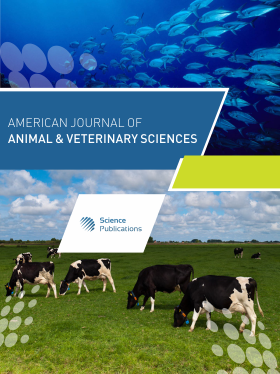Conventional Beef Cattle Farming Practices in Wolaita and Sidama, Southern Ethiopia
- 1 Department of Biology, College of Natural and Computational Sciences, Wolaita Sodo University, PO Box 138, Wolaita Sodo, Ethiopia
- 2 Department of Biology, College of Natural and Computational Sciences, Wolaita Sodo University, PO Box 138, Wolaita Sodo, Ethiopia
Abstract
Beef cattle farming is an integral part of livelihood for rural and urban smallholder farmers in developing countries. We aimed to describe the cattle farming practices in selected communities of Diguna Fango district, Wolaita Zone, and Sidama Region, Southern Ethiopia. Data were collected with pretested, semi-structured questionnaires applying a cross-sectional study. A stratified sampling was used to select a total of 180 fatteners from the three communities. Collected data were analyzed using descriptive statistics. The most cited forages for fattening cattle in the dry season were hay and wheat seeds, 180 (100% each), and fresh kidney bean and maize shoot system in the wet season, 180 (100% each). Rivers (75%) and ponds (84%) were the dominant sources of water. The body frame selection criteria had a significant (p = 0.021) effect on the weight gain and determined the fattening period. The breed that was most preferred (100%) was Wolaita sangga. Trypanosomiasis (57.77%) was the highest disease burden in the study area. Lack of clean potable water (50%), feeding resources (20%), and animal health ailments (10%) were the main constraints on beef cattle farming practices in the study area. Market actors were producers, consumers, middlemen, restaurant owners, traders, and butchers. The majority (79%) of fatteners had access to market information before the sale and the price was self-determined by fatteners (78%). Availability of better meat types, cattle, and high market demand were identified as good opportunities which could be used to enhance the performance of cattle fattening activity in the study area. It should be essential to provide farmers with adequate training and extension services on improved cattle fattening technology, management techniques, and market information to increase the revenue of the farming communities that use seasonally available feed supplies.
DOI: https://doi.org/10.3844/ajavsp.2023.199.209

- 1,949 Views
- 1,575 Downloads
- 32 Citations
Download
Keywords
- Beef Cattle
- Diguna Fango
- Ethiopia
- Fattening
- Marketing
- Wolaita
